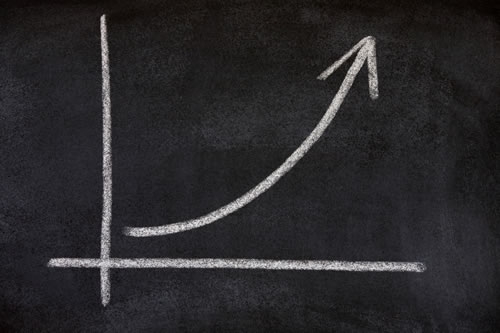The Folly of Endless Growth on a Finite Planet
Ask any policy wonk, politician or pundit – Republican,
Independent or Democrat – about the sine qua non of economic
policy, and the chances are pretty good their answer will boil
down to one word: growth.
No matter what their stripe, a growing economy is practically synonymous with a good economy.
Yet this flies in the face of reality. It is a disconnect, a non sequitur, an impossibility, a folly of immense proportions. Because the plain fact is, the economy can’t continuously grow in a finite world, and we are already bumping up against limits.
Right now, it takes 1.5 Earths worth of resources to maintain our current economy. By 2050, assuming only moderate growth, we’ll consume nearly 3 Earths worth.
But of course, we only have one planet.
Those extra worlds we consume represents debt – assets taken from our children. In ecologic terms, it is called “overshoot.” And living systems cannot long survive in overshoot mode.
The term overshoot comes from ecology, and a classic example of an ecological overshoot might serve to make this concept more real.
So here you go. In 1944, the US Coast Guard released 29 reindeer onto St. Mathew Island. By the summer of 1963, the population had exploded to over 6,000 animals.
Quite a success, eh?
Not really. By the end of 1963, the population plummeted to fewer than 50 scrawny, starving animals. They’d experienced an ecological overshoot.
And notwithstanding the economists and politicians advocating more and more growth, we humans are pretty close to the reindeer’s plight in 1963, and we’re taking the rest of the species with us. Fueled by increasing population and increased per capita consumption, we are perched on the edge of a global ecological abyss.
Exhibit A has to be climate change. Exhibit B has to be commodity reserves. They are two sides of why economic growth can’t be our economic polestar. Nearly four decades ago, economist Herman Daly pointed out that our macroeconomic models were all circular and self-contained, while in reality, the economy was a subset of the environment, taking resources from the natural world, using them to provide goods or services, and discarding the wastes.
Resource depletion and waste such as carbon emissions are not priced in our growth oriented market. Indeed, as Robert Repetto demonstrated, we treat resource depletion as wealth generation in national accounts such as GDP.
Commodity supplies are finite, and as Chris Martenson points out in his excellent book "The Crash Course," we are rapidly depleting non-renewable resources.
On the other end of our economic growth model, wastes are accumulating at an alarming rate. Whale carcasses contain enough persistent organic chemicals that they could be considered hazardous waste. Carbon dioxide has gone from about 285 ppm atmospheric concentration at the turn of the 19th Century to 395 today, and on our current trajectory, we will reach nearly 1000 ppm by 2100.
Water is becoming increasingly scarce and increasingly privatized.
Desertification, fueled by global warming, is expanding throughout the world.
So yes, we are very much like the reindeer on St. Mathew island in the early 1960’s – growing rapidly and in imminent danger of overshoot. In fact, when it comes to climate change we’re already locked into eons of rising seas and melting ice caps.
But if growth cannot be our goal, what should it be?
There is an alternative. We can develop.
Developing means investing in reducing the throughput of resources and output of pollutants, while preserving prosperity. For example, according to the National Renewable Energy Laboratory, the US could get 80% of its energy from renewables by 2050, using technology available today. This would mean zero depletion of resources and near zero emissions for most of our energy supply.
Similarly, designing for disassembly and reuse could drastically reduce resource use and waste generation.
And retooling our economy to accomplish this would create high paying jobs. In fact, clean energy investments generate 3 times as many jobs per dollar invested than fossil fuels do.
We can avoid overshoot by 1) being poorer, 2) reducing the ecological throughput of our economy by using more efficient and cleaner technologies, or 3) by reducing population. Another way to look at this is that the better our technologies and the lower our population, the more prosperity we can sustain.
But this demands a government with strong regulatory authority and that demands an educated populace capable of critical thinking skills. Don’t hold your breath.
